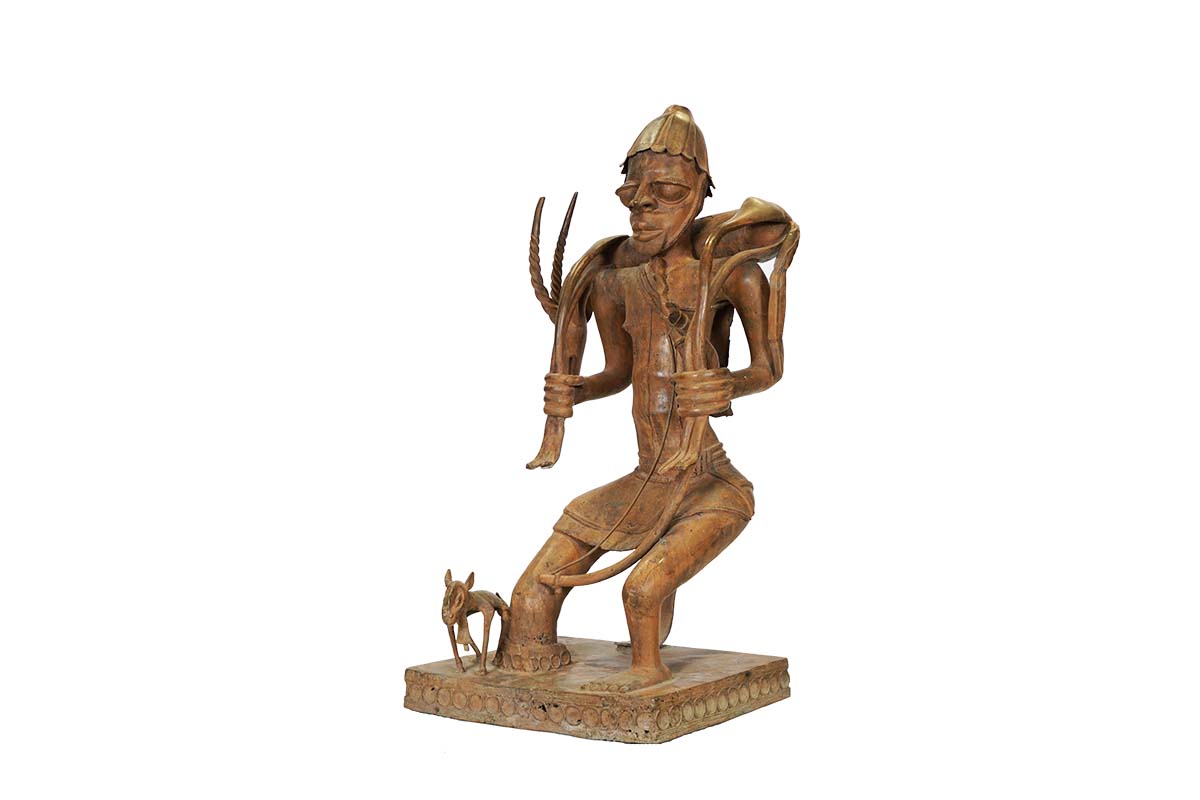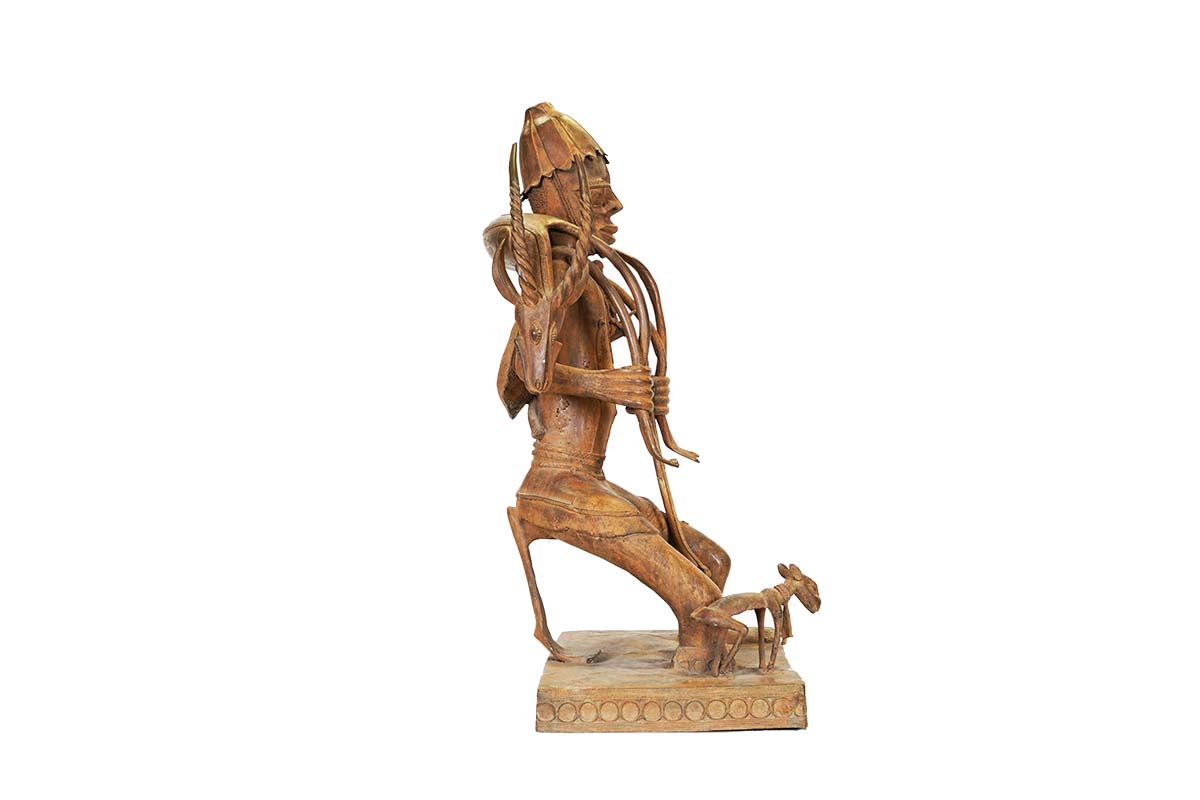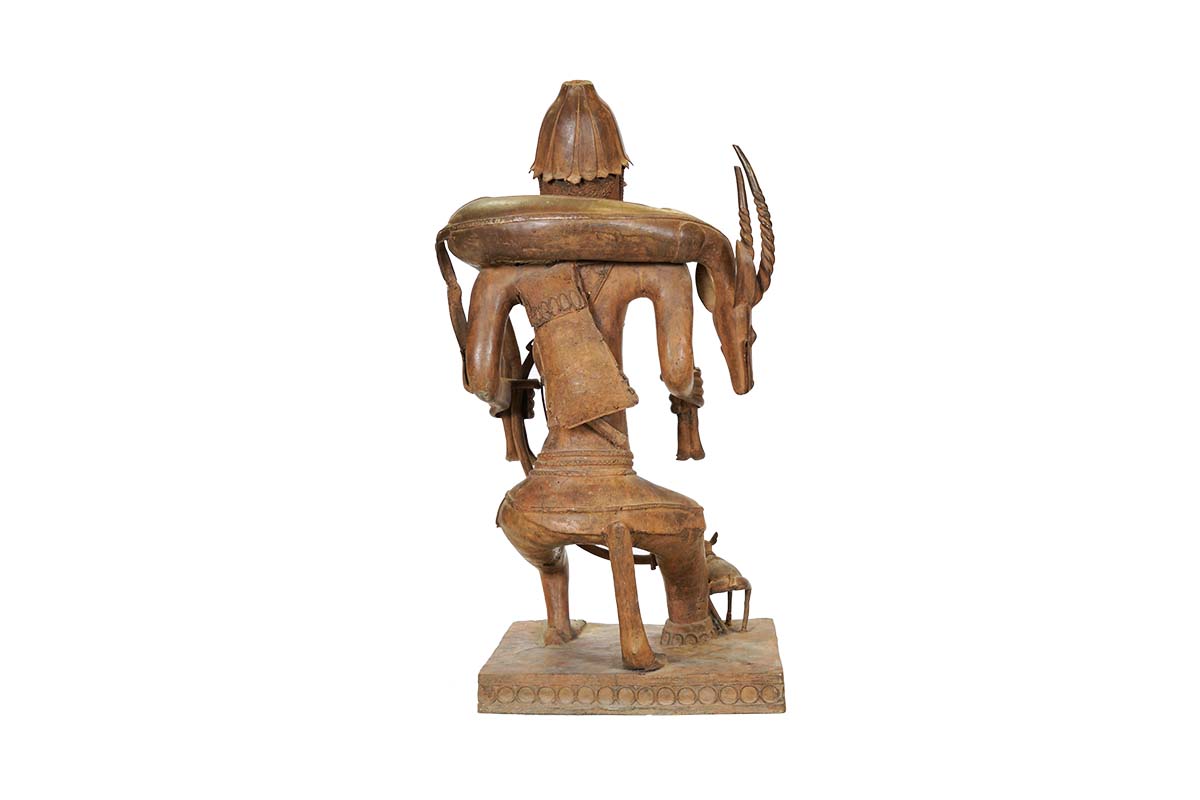| Type of Object | Bronze Statue |
|---|---|
| Country of Origin | Nigeria |
| Ethnicity | Nupe |
| Material | Copper Alloy |
| Approximate Age | Unknown |
| Height | 45.5" |
| Width | 22.5" |
| Depth | 22.5" |
| Weight | 194.5lbs |
| Overall Condition | Some corrosion |
Heavy Nupe Bronze Statue 45.5″ – Nigeria
$4,250.00 Original price was: $4,250.00.$2,125.00Current price is: $2,125.00.
Sold

Additional Information
About Lost-Wax Casting Method
In-direct lost wax casting is the most basic form of metal casting seen in African cultures. Scholars have yet to establish exactly how it was introduced and developed in West African regions, but it is known that it was being used prior to Portuguese explorers’ arrival in the late 1400’s.
To use this method, the artist must begin with a low melting point material that can retain its shape but is soft enough to carve intricate details into, such as beeswax. Once the artist finishes carving the details, layers of clay are applied to the outside and then left to dry. The first layer of clay applied takes on the details, while the additional layers of coarser clay provide strength to the entirety of the mold. Once fired, the wax is then melted, leaving only the baked clay shell. Liquid metal is then poured into the empty clay mold. Once the metal has hardened and cooled, the clay exterior is then broken. This process reveals the finished metal object, which is always unique due to the mold being destroyed during the final process.
Many West African sculptors have altered this method by using multiple castings, which can be used to create hollowed and thin metal figures. One of the ways to achieve the hollowed result is creating the wax sculptures over a formed clay core. Iron spikes are used to attach the solid clay core to the clay layers of the mold. The metal is then poured inside and left to cool and hardened. At the end of the process, the clay core is then broken up and removed and the final brass work is finished. These hollowed pieces can then be united to create larger figures or vessels.
Source:
Apley, Alice. (2001, October) African Lost-Wax Casting Essay. http://www.metmuseum.org/toah/hd/wax/hd_wax.htm
Tribe Information
About the Nupe People
The Nupe people have lived along the banks of the Niger River since the 15th century and were conquered in around 1830 by the Muslim Fulani people. Their art is therefore non figurative and mostly decorative.
Nupe houses are decorated with doors and posts carved with geometric designs, although there are some rare examples of animal designs. Circular stools, supported by varying numbers of feet, are presented by grooms to their brides. Traditionally they are used as 'prestige' objects on market days and during important meetings.
Source:
Baquart, Jean-Baptiste. The Tribal Arts of Africa. New York: Thames and Hudson Inc. 1998. Print.







